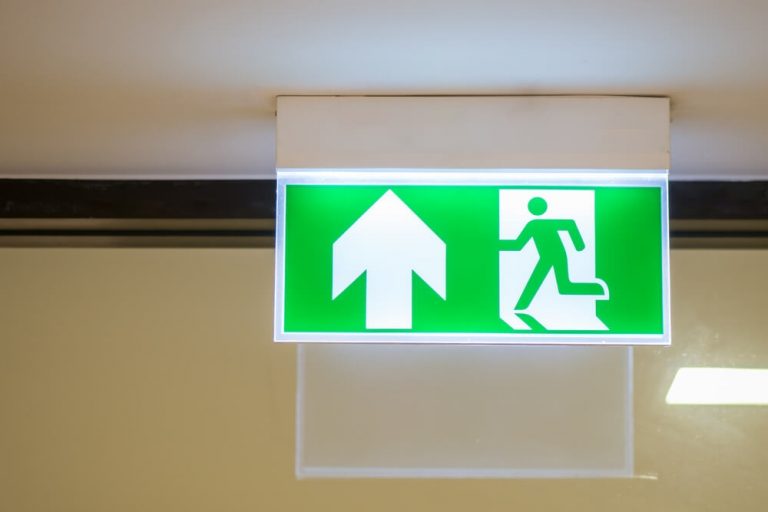THE IMPORTANCE OF EMERGENCY LIGHTS
Without emergency lights, occupants of a commercial building will lack a safe exit path in the case of a fire. But it is not enough to just have emergency lights installed onsite; routine testing and inspection of emergency lights are just as important, as is a carefully planned Emergency Evacuation Plan.
THE IMPORTANCE OF EMERGENCY EVACUATION PLANS
It is not enough to just assume that in the case of a fire, building occupants will evacuate through the nearest illuminated fire exit. An Emergency Evacuation Plan is far more complex than this, providing information on:
- The variety of areas in a commercial building, especially those with noisy machines where a fire alarm might not be heard (for instance a design and technology workshop or an industrial kitchen)
- Different types of fire scenarios that could occur within a building – for example the evacuation plan in a kitchen area will differ to an evacuation plan in an office full of electrical appliances
- Instructions on how to appropriately use the fire safety equipment in the premises such as fire extinguishers, hoses, fire blankets and hydrants, and where to locate them
- New items in the building, from furniture through to equipment and renovations – changes to the evacuation plan might be needed as a result
- How to identify danger and assess whether evacuation should proceed
- Who the appointed Fire Warden is, and who their appointed assistants are
- How to recognise evacuation exit points, and where the nearest exit point is located
- Where to safely gather after evacuation
- How to assist those who might need assistance evacuation, for instance someone who is pregnant or an individual with a disability or injury
- How to evacuate pets from the home if the building is a pet-friendly apartment complex
AUSTRALIAN STANDARDS FOR EMERGENCY LIGHTS
The Australian standard for emergency evacuation lights consists of standards that cover three crucial components:
- System design, installation and operation
- Inspection maintenance
- Emergency escape luminaries (wardens) and exit signs
How often should emergency lights be maintained?
Every six months, according to the Australian standard. Maintenance involves testing emergency lights and replacing them if faulty – be it from damaged fittings, spent globes or batteries or an undedicated circuit.
WHY CHOOSE FIRE SAFE ANZ FOR YOUR EMERGENCY EVACUATION PLAN?
The highly-trained Fire Safe ANZ testing staff are directly engaged with Fire Safe ANZ, providing emergency light installation, servicing and maintenance you can trust, as well as tailored Evacuation Diagrams for an exit plan that is as sound and safe as possible.
The only expected feature of a fire in a commercial property is that it is always unexpected. Get in touch with Fire Safe ANZ today for your comprehensive Emergency Evacuation Plan, complete with emergency lights that meet Australian standards.

